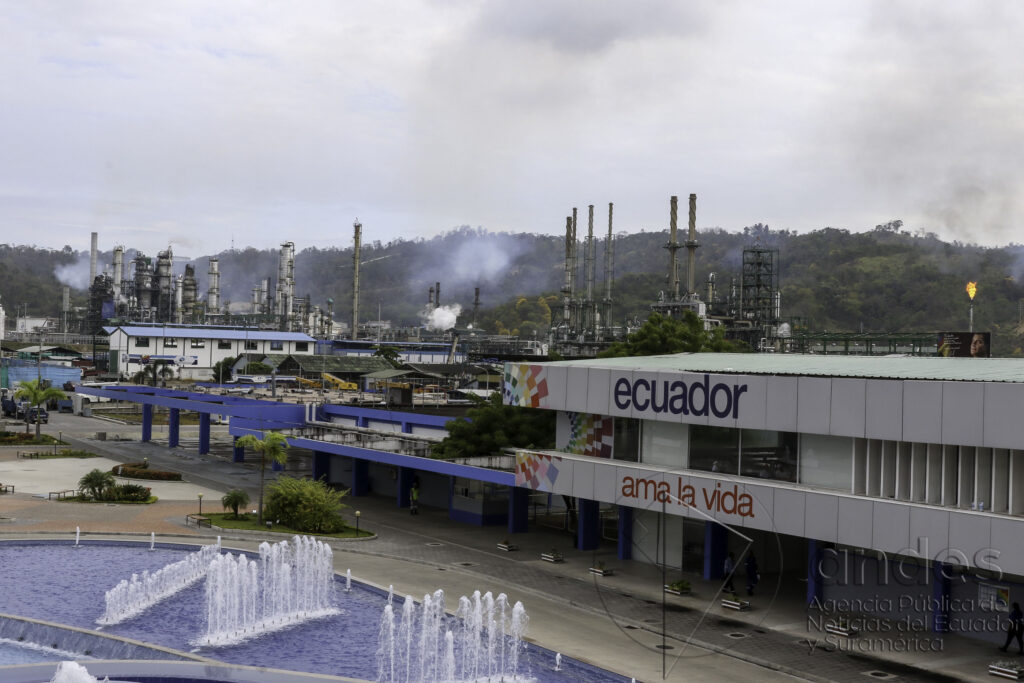Beyond Resiliency: Empowering the Poor and Vulnerable to Help Cities Thrive
Mel Gross | May 20, 2024

Esmeraldas, a coastal city of 155,000 people in northwestern Ecuador, exemplifies the complex reality surrounding the concept of resilience in urban planning. Despite hosting economically vital infrastructure like a major sea port and oil refinery, the United Nations Refugee Agency reports that 40% of its population lives in poverty. The proliferation of informal settlements lacking basic services on environmentally vulnerable lands has become the structural basis for many of the city’s social challenges. Yet Esmeraldas’ Afro-Ecuadorian residents are lauded for their resilience in the face of hardship, violence and environmental threats – a framing that raises questions about resilience narratives. A 2022 United Nations Sustainable Development Group Blog noted “…the women of Esmeraldas showed remarkable resilience in the face of economic hardship, violence and danger while maintaining their warmth and hospitality.” A recent article in Expreso, a local newspaper, highlights the thoughts of one of the volunteers, Érika, at the ‘Olla Comunitaria’ (Community Kitchen); (translated from Spanish) “In these situations is when brotherhood is seen. The help from institutions is not arriving, that’s why we have to help each other.”
As cities increasingly adopt resilience as a sustainability strategy, a critical examination reveals the potential for such narratives to perpetuate injustices by placing the burden of adapting on marginalized groups rather than addressing systemic root causes. Drawing on examples from Esmeraldas, this article explores resilience’s entanglement with neoliberal ideology, the agency of underrepresented communities in resisting imposed narratives, and alternative visions for truly thriving cities centered on equity and self-determination.
Resilience has become a popular buzzword in urban planning and design, touted as a critical component of long-term sustainability. However, its origins and implications for urban policy should be carefully considered. Proponents argue that resilience equips cities to withstand and adapt to various shocks and stresses, while critics suggest it ignores the systemic injustices that necessitate resilience in the first place. Tom Slater’s 2021 book Shaking up the City (UC Press) provides a nuanced understanding of resilience and its potential pitfalls. He argues that resilience strategies may improve communities’ physical, social, and emotional well-being, but can also perpetuate existing inequalities and injustices.
The debate over resilience in urban planning and design is not just about terminology, but about the values and priorities that shape our cities. As we navigate this terrain, it is crucial to remain vigilant about the narratives we embrace and the future we envision for our urban landscapes.

Resiliency and Misleading Narratives
As described by the Resilient Cities Network, resilience is often portrayed as a strategy to prepare for and adapt to various shocks and stresses, including environmental disasters, economic downturns, and social upheavals. They stress “Urban resilience is about making a city better, in both good times and bad, for the benefit of all its citizens, particularly the poor and vulnerable.” Indeed preparing to adapt to stressors seems prudent for any community and is consistent with much self-help advice aimed at helping individuals weather personal crises.
However, this similarity to self-help advice highlights an important ideological connection. In his book, Slater describes how resilience is often aligned with neoliberal ideologies prioritizing the responsibility of individuals over the state. The burden of adapting to stressors is placed on local communities, particularly those that are poor and vulnerable, rather than addressing larger systemic issues that may be causing or exacerbating these stressors. Slater argues this potentially absolves powerful entities, such as the state, of their obligations. The narrative of resilience often emphasizes the ability of cities to withstand and bounce back from adversity but may divert attention from the root causes of challenges.
As the neoliberal policy vacuum leaves governments unable to provide vital services, non-profit organizations step in to fill the gap, often without grounding in, or accountability to, the communities they serve. Sometimes referred to as the non-profit industrial complex, their focus on securing funding can perpetuate a cycle of dependency, maintaining the need for their services rather than addressing root causes, for fear they might actually solve them, rendering their services obsolete. This deliberate avoidance of root-cause solutions aligns with what Slater cites as “Agnotology” – the intentional production of ignorance by those with vested interests. This effectively keeps certain questions, such as obligations of the state to alleviate stressors, off the urban agenda.
Esmeraldas exemplifies this complex reality. The resilience strategies of the government and various relief organizations inadvertently reinforce inequities by focusing on short-term adaptation, and are actively exploited by state and corporate actors advancing their own agendas at the expense of addressing the structural drivers of vulnerability.

The Agency of the People
If we are to truly make the city thrive, we must move beyond merely adapting to shocks; we must empower marginalized communities to withstand and recover from challenges while transforming the systems that perpetuate vulnerability. The challenges in creating structural social change in communities include entrenched power dynamics and systemic inertia, resource constraints, funding limitations, deeply ingrained cultural and social norms, competing political and economic interests, and capacity building and skills development needs. These challenges necessitate a sustained effort to resist and transform the underlying systems and structures that perpetuate inequality and limit community autonomy. Such efforts begin at the local level, but they must work their way up to influence systemic changes that address historical trauma and injustices. This requires a collaborative and adaptive approach, fostering trust, reciprocity, and collective efficacy within and across communities. The approach must recognize and value local residents’ knowledge and agency, challenge dominant narratives, and embrace diverse research methods and epistemologies. Alternative narratives should highlight communities’ positive aspects and potential, rather than fixating on urban deficits.
A recent study of Esmeraldas’ urban growth found that the proportion of Afro-Ecuadorian residents and their exposure to environmental hazards were positively correlated to urban growth patterns, underscoring the intersections of racial segregation, uneven development, and environmental injustice in shaping the city’s geography of risk and precarity. The study notes that the city’s economic dynamics have historically been based on enclaves prompted by external funding, such as the banana and oil industries, as well as seaport activities. These activities offer low-skilled jobs and have become the main rural and international immigration pull factors, incrementing the city’s population.
Despite being concentrated in environmentally vulnerable areas by extractive industries, marginalized groups have resisted imposed narratives of resilience through practices of “cimarronaje urbano” or urban marronage – autonomous forms of collective survival and organizing rooted in insurgent territorial practices. Initiatives like the “Olla Comunitaria” community food program leverage local knowledge, resources, and social bonds to build agency from the ground up. Such efforts challenge the individualistic, property-centric logics driving dominant urban development models. Instead, they prioritize collective wellbeing, environmental justice, and community self-determination – a vision focused on transforming oppressive systems into thriving new configurations, rather than merely coping with their inequities. Esmeraldas underscores that equity cannot be dictated from above but must emerge through the lived experiences and mobilization of those most impacted by inequities.
As we look to build more thriving cities, we must center the voices, experiences and aspirations of underrepresented communities. Their struggles offer a roadmap for how thriving cities can be cultivated authentically – through inclusive planning, redistributing decision-making power, and co-creating solutions that prioritize collective wellbeing over accumulation. By investing in community-led initiatives and supporting structural social changes, we can build a more just, and sustainable world, where every community can thrive and reach its full potential.

Mel Gross is a graduate student in landscape architecture at Cal Poly Pomona and the 2023 department nominee for the Landscape Architecture Foundation’s prestigious Olmsted Scholars Program. Driven by the potential for landscape architecture to create more equitable communities, Gross’s work explores participatory design strategies that amplify marginalized voices and foster community resilience through the co-creation of public spaces celebrating local identities. Their research focuses on developing human-centered approaches that interweave solutions for ecological resilience with building social resilience and cohesion, prioritizing the cultivation of spaces of resistance, healing, and self-determination for underrepresented populations.